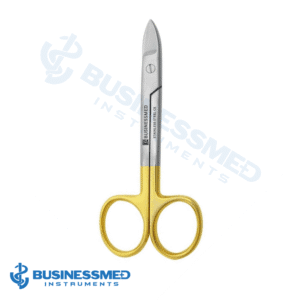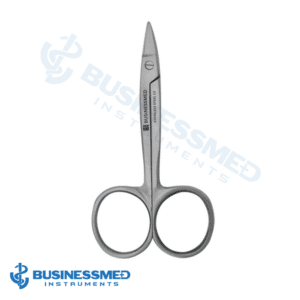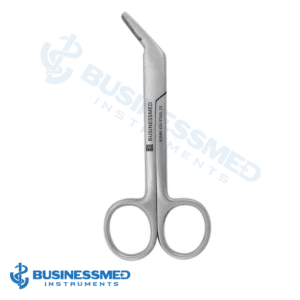Showing all 5 results
Orthodontic Scissors – Precision Wire & Tissue Cutting Tools
At BusinessMed Instruments, we supply orthodontic scissors designed for clean, precise cutting of archwires, ligatures, and soft tissue in orthodontic and surgical procedures. Made with surgical-grade stainless steel, these instruments ensure durability, safety, and ease of use during complex dental treatments.
Why Choose BusinessMed Orthodontic Scissors?
High-precision blades for clean cuts
Multiple designs (straight, curved, serrated, heavy-duty)
Autoclavable stainless steel with CE/ISO certification
Ergonomic handles for enhanced comfort and control
Types of Orthodontic Scissors
1. Straight vs Curved Blade Scissors
Straight Scissors: Provide a direct cutting path for ligatures, archwires, and accessible areas.
Curved Scissors: Offer better maneuverability around brackets and posterior teeth.
Products:
2. Serrated & Smooth Edge Scissors
Serrated Edge: Prevents slippage when cutting stiff wires or elastics.
Smooth Edge: Ideal for trimming soft tissue or delicate materials.
Products:
3. Wire Cutting Scissors
Specialized angled designs allow precise cutting of orthodontic wires without damaging surrounding tissues.
Product:
Key Features to Look For
Material: Surgical-grade stainless steel, corrosion-resistant, and fully autoclavable
Blade Design: Serrated edges for wire grip, smooth edges for tissue trimming
Ergonomics: Lightweight handles to minimize hand fatigue during repetitive use
Certification: ISO and CE-marked instruments for clinical safety
Clinical Applications
Wire Trimming: Cleanly cut archwires, power chains, or ligatures
Soft Tissue Trimming: Occasionally used in minor surgical exposures
Material Dressing: Efficient removal of excess bonding or elastics
Comparison Table
| Scissor Type | Primary Use | Key Advantages |
|---|---|---|
| Straight, serrated edge | Ligature & wire trimming | Clean cuts, non-slip grip |
| Curved blade | Access in posterior regions | Improved reach and visibility |
| Locking scissors | Safe handling and storage | Blade protection, added safety |
| Micro-saw/serrated design | Cutting stiff or slippery wires | Enhanced cutting security |
FAQs
Q1. What makes orthodontic scissors different from general dental scissors?
They are specifically designed for cutting fine wires and soft tissues with minimal trauma.
Q2. When should I use curved instead of straight scissors?
Curved scissors are preferred for hard-to-reach posterior areas where visibility is limited.
Q3. Are your scissors autoclavable?
Yes, all our orthodontic scissors are made of surgical-grade stainless steel and are fully sterilizable.
Q4. Can they be used for both wire and tissue trimming?
Yes, depending on the blade type—serrated for wires, smooth for tissues.
Q5. Are locking scissors worth it?
Locking mechanisms enhance safety and extend the tool’s lifespan.
Related Orthodontic Categories
Conclusion & Call-to-Action
Selecting the right orthodontic scissors ensures precision in wire cutting, minimizes irritation, and enhances clinical efficiency. BusinessMed Instruments offers a range of scissors tailored to orthodontic needs.





